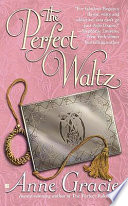Wash balls, infrequently also called soap balls, were common for centuries before the Regency, but they would have been a normal part of bathing, shaving, and general cleanliness for many people during the era. It was essentially: Webster, N. (1833). A Dictionary of the English Language: Abridged from the American Dictionary, for the Use of Primary Schools and the Counting House. United States: N. & J. White.
Rennie, J. (1833). A New Supplement to the Pharmacopœias of London, Edinburgh, Dublin and Paris; forming a complete Dispensatory; … including the New French medicines … Being a general book of formulæ, etc. United Kingdom: Baldwin and Cradock.
There are additional recipes in the book above. You can click on the text to be taken directly to Google Books.
Recipes appeared in 18th century books, as well, including The Art of Cookery (Hannah Glasse).
Wash balls, particularly the perfumed type, were more likely to be luxury items used by the upper class in part because of the additional labor of grating soap and then kneeding, with other oils, perfumes, and water, into a ball. It was also owing to a Restoration era tax on soap in England that would not be repealed until 1853.
Soap cakes, a hard form of soap, was also a common form for soap.
Adams, S., Adams, S. (1825). The Complete Servant: Being a Practical Guide to the Peculiar Duties and Business of All Descriptions of Servants … with Useful Receipts and Tables. United Kingdom: Knight and Lacey.
Cake soap was also common for laundry washing:
The Female Instructor; Or, Young Woman’s Companion: Being a Guide to All the Accomplishments which Adorn the Female Character …: With Many Pleasing Examples of Illustrious Females. To which are Added, Useful Medicinal Receipts, and a Concise System of Cookery …. (1811). United Kingdom: Nuttall, Fisher, and Dixon.
As I know a clever Reader will ask, Naples soap referred to soapmaking practices from Naples, Italy which had a long history of soapmaking, with guilds formed as early as the 6th century. Another fact, liquid soap would be patented in 1865 by William Sheppard. It would not begin to be mass produced until BJ Johnson’s version developed from palm and olive oil which introduced the brand Palmolive.










